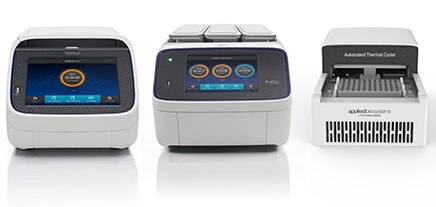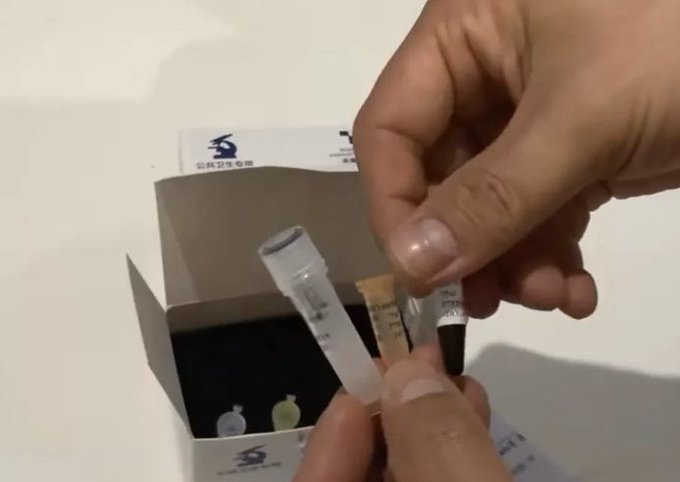One Of The Important Item In The Fight Against Coronavirus- PCR Test Kits, Thermocyclers and PCR Sequencers –How Many Countries Are Truly Prepared?
Source: Thailand Medical News Jan 31, 2020 5 years, 2 months, 3 weeks, 5 days, 13 hours, 17 minutes ago
While day to day, the media and public focus with regards to the China
coronavirus epidemic has been on the death tolls and infected cases emerging in various countries, what most media and individuals are failing to realize is that most of these figures are not accurate.
 Thermocyclers From Thermo Fisher
Thermocyclers From Thermo Fisher
These days as a matter of national security and also for political and economy reasons, certain governments are preventing the release of actual figures by using the excuse that they are awaiting test results.
Actual
PCR tests, once the samples arrive only takes about 30 minutes to process unless the samples have been frozen, in which additional time might be needed for thawing.
The process is simple and involves preparing the test samples and then processing it in a machine called a
thermocycler for nucleic acid amplification and then adding the
assay reagents and placing it in type of sequencing machine to then identify the presence of the
coronavirus.
.jpg) A topline Thermocycler From Thermo Fisher
A topline Thermocycler From Thermo Fisher
So why are governments taking a long time to get test results? In some cases, it has been reported that the test results are taking as long 5 to 7 days!
The truth is that either these Governments are withholding information (better than lying or spreading fake news) or they do not have these testing platforms.
These
thermocycler machines,
PCR machines and
genomic sequencing machines are not expensive and costs anything between US$90,000 to US$ 450,000 per set up.
Unfortunately it has been found out that in reality, many countries have yet to have such set ups and in some countries, they might not have enough if a breakout happens just like in the case of
China. Initially, in
China, all test samples had to be sent to the National CDC Office in Beijing but now a second set up has been done in Hubei provincial CDC office. However many provinces in
China do not have the set up yet and even a single set up might not be enough considering the numbers of suspected cases.
Also the actual
test kits to collect the samples are also in acute shortage. Initially China had only contracted two companies to make these when the virus breakout occurred but they could not manage to produce the 50,000 test kits needed and Wuhan was only provided with 6,000 which was not enough. On the 24
th Of January, two more companies in Shanghai were given licenses to start production but even then
these two are still not able to produce enough considering the number of suspected cases or what is termed as being those under observations, rising day by day. Official numbers for such patients manifesting symptoms but yet to tested are about a quarter million now all over
China.
 coronavirus test kits
Assay reagents
coronavirus test kits
Assay reagents required of for the necessary
PCR test are also in short supply at the moment.
We at
Thailand Medical News had earlier reported on the issue as to why figures were not reliable with details from our ground staff in Wuhan and Beijing. The story appears here…
https://www.thailandmedical.news/news/reasons-for-china%E2%80%99s-unreliable-death-and-infected-statistics--finally-revealed-insufficient-test-kits,-also-cambodia-reports-first-case
The
China Health authorities will only term a death or a person as being infected from the
coronavirus and added to their daily briefings only if they had gone through the required
PCR test and the results are positive. So if a person dies despite having symptoms but has not been tested, it is not recorded as being due to the
coronavirus, same for number of infected. Those having symptoms but have yet to be tested are termed as under
observation while a new term has emerged for reporting lately in China so has to not give focus to the numbers under
observations ie
Highly Suspected - those who are having symptoms but are now in critical conditions but yet to be tested (this is different from those termed critical ie these are already confirmed infected but conditions have turned severe.) Most media are not aware of these different aspects and are just reporting death and infected tolls when in reality those do not represent an actual severity of the situation in
China. The current situation is China is really massive and out of control.
It is also critical that countries where governments are claiming they are prepared, have sufficient
test kits and also
PCR machines to deal with the numbers when the actual situation arises.
Besides, in terms preparedness, drugs such as NSAIDS like Ibuprofen, steroids, antivirals like the lopinavir/ritonavir combo, antibiotics to deal with sepsis and other drugs to deal with organ failure, etc are needed in huge stockpiles to deal with the coronavirus outbreak. Respirators, oxygen supply, basic medical equipment such as syringes, masks, iv drips, gowns, sterilisers, oximeters, etc have to be in sufficient stocks. In
China at the moment, all these are in acute shortage despite reassurances by the government.
WHO officials should also send their teams to do a real assessment of the actual situation all over the country and not just base their observation during PR inspections, when everything is spruced up to look like things are in control.
International media should also be more diligent and do more investigative journalistic research before simply reporting on details given during press briefings.
For more updates about the China coronavirus epidemic or the Thailand Coronavirus scenario, keep on checking at : https://www.thailandmedical.news/articles/coronavirus

.jpg)
